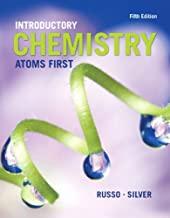There are exceptions to the predictions of VSEPR. Consider CH 3 , known as a methyl radical.
Question:
There are exceptions to the predictions of VSEPR. Consider CH3, known as a methyl radical.
(a) Create a dot diagram for the methyl radical. How is it fundamentally different from other dot diagrams you have done?
(b) Use VSEPR to predict the shape of the methyl radical and draw it with that shape (treat the odd electron as a single electron group).
(c) The methyl radical is known to be planar with 120° H—C—H angles. What steric number is being employed here, and what is the carbon atom doing with respect to the odd electron in determining molecular shape?
(d) The CF3 radical does obey VSEPR. Draw it according to its VSEPR-predicted shape. What steric number is being employed here?
(e) The C—H bond is shorter than the C—F bond. When bonds are short, the atoms at the ends of the bonds can bang into each other (this is called steric congestion) unless a geometry is adopted to get around this. Use this knowledge to explain why CH3 violates VSEPR, but CF3 does not.
Step by Step Answer:

Introductory Chemistry Atoms First
ISBN: 9780321927118
5th Edition
Authors: Steve Russo And Michael Silver




